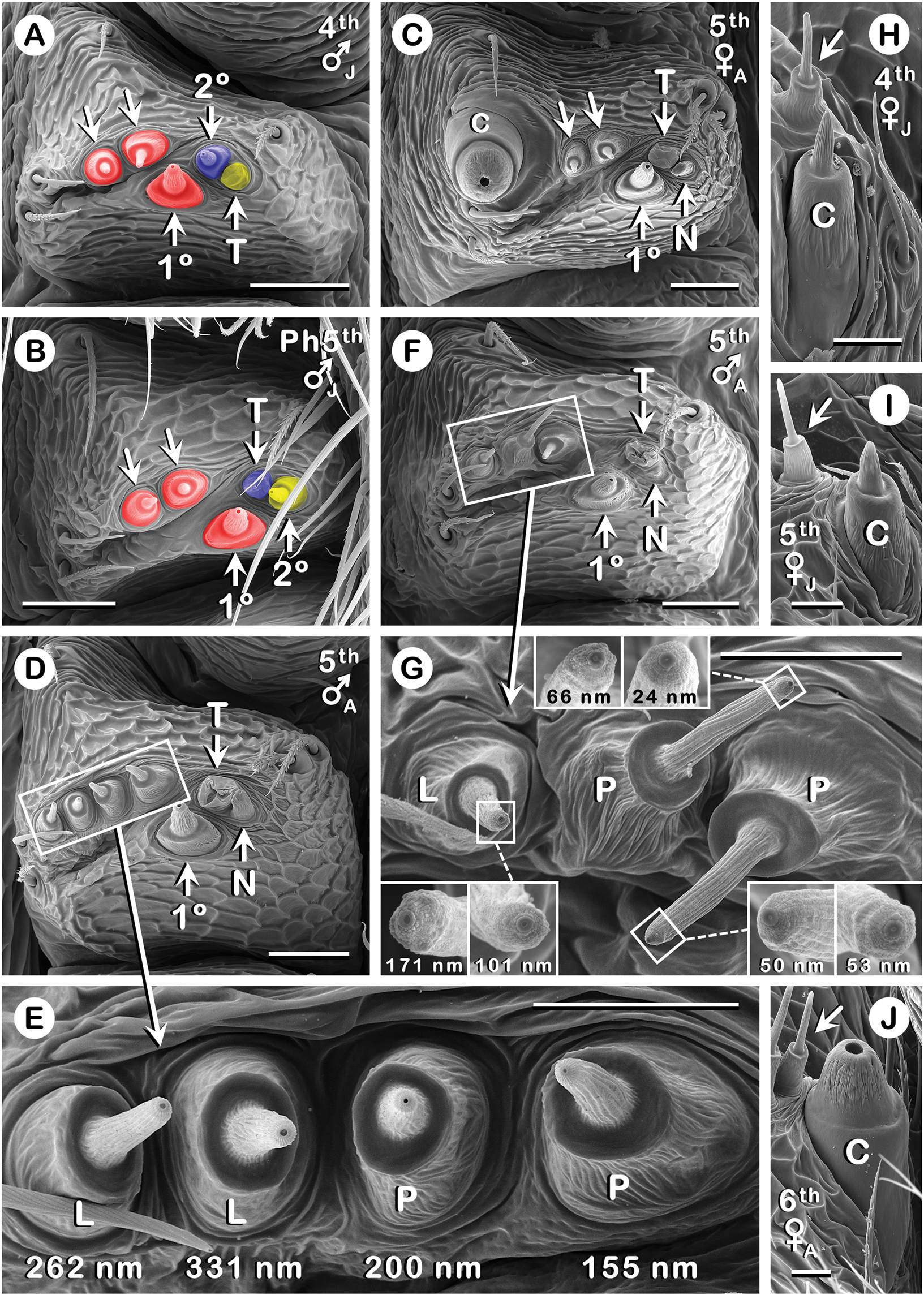
|
||
|
PMS of 4th to 6th instars of Australomimetus spinosus. All unlabeled arrows point to non-T-AAC spigots. A, B.PMS from one juvenile specimen, well into proecdysis. Color coding explained in Results (Convention 5 in ‘Conventions applied…’). A. Old exoskeleton. B. New exoskeleton directly beneath (A). C. Adult female. With one exception [see Results (‘PMS-Sexual and geographic…’) and Discussion (‘AC spigot numbers…’)], adult females had two AC spigots/PMS. D-G. Adult males from eastern Australia (New South Wales) (D, E) and Western Australia (F, G). AC spigots magnified in (E, G) to show wider openings on ‘late’ AC spigots (L) relative to neighboring ‘pioneer’ AC spigots (P) [see Results (‘PMS-Sexual and geographic…’)]; measured diameters of openings given in nm [see Materials and methods (‘SEM of spinnerets…’)]. In (G), distal ends of AC spigot shafts magnified in insets (connected by dashed lines), with each spigot’s counterpart on the opposite PMS shown in an adjacent inset. H–J. Ontogenetic changes in CY spigot (C) morphology; lateral view. Note changes in width relative to nearest AC spigot (arrow). A–G, I, J. Left PMS. H. Right PMS (image flipped). 1°, 1° MiA spigot; 2°, 2° MiA spigot; C, CY spigot; L, ‘late’ AC spigot; N, 2° MiA nubbin (ontogenetic); P, ‘pioneer’ AC spigot; T, 2° MiA tartipore. Scale bars: A-D, F 20 µm; E, G-J 10 µm. See also Abbreviations and terminology (‘Spinning apparatus abbreviations’) and Results (Convention 3 in ‘Conventions applied…’). |